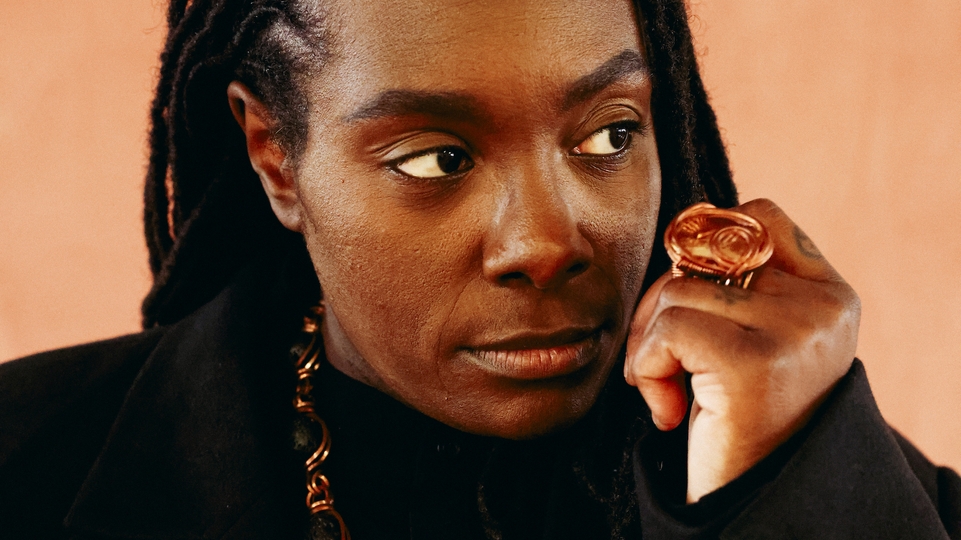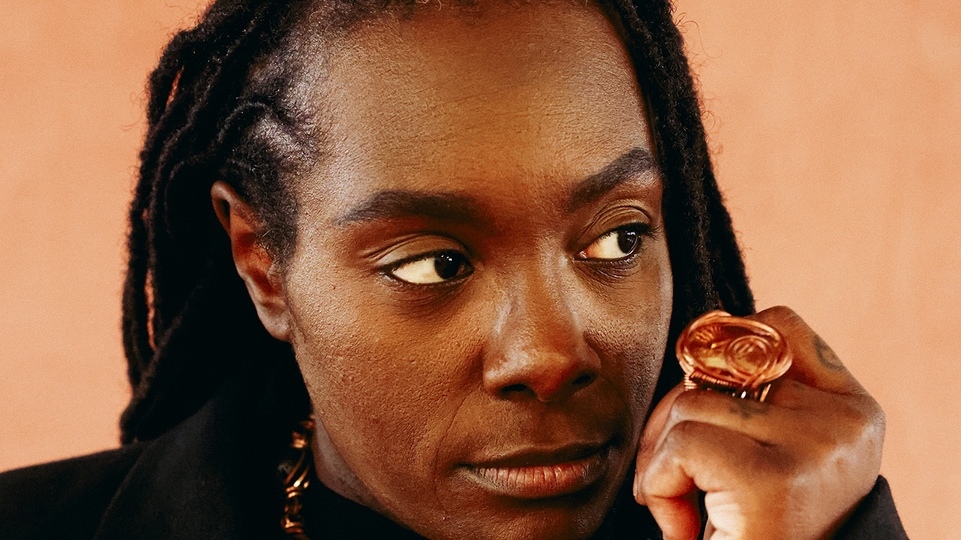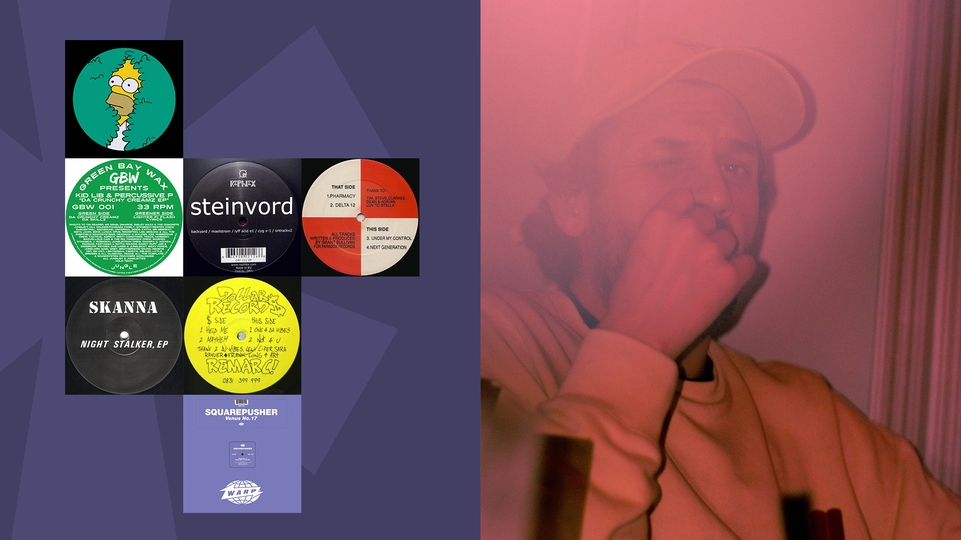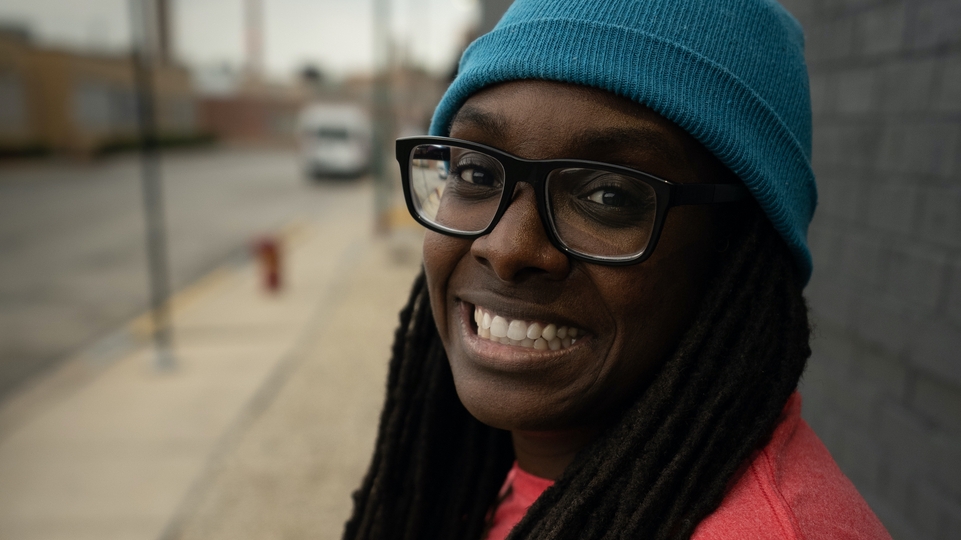
Rewiring electronic sound with Suzanne Ciani and Rian Treanor
At Portugal’s Semibreve festival, we sat down with Suzanne Ciani, a pioneer of electronic music and modular synthesis, and dance music disruptor Rian Treanor, who specialises in software manipulations. In conversation, surprising parallels are found in their work, and in their appreciation of sound, space and spontaneity
As electronic music evolves, its web becomes trickier to trace. As historical strands reach outward and merge, creating new sounds, performance styles and scenes, the twists and turns they take along the way can become blurred. That can be troubling. When contemporary techno DJs/producers lose sight of their genre’s black, socially charged roots in Detroit, for example, it runs the very real risk of becoming totally whitewashed and lifeless. The same goes for house, and its roots in gay clubbing culture in ’80s Chicago.
For all areas of electronic music, be it from a club tradition or a more avant-garde, classically informed one, understanding history, and the challenges tackled by its pioneers, gives useful context for the present. It equips contemporary artists with the tools to tackle recurring issues, and to explore the innovations that have paved the way for their own work. Looking to certain corners of dance music over the past three decades, the weaving of classic dancefloor sounds with more experimental strands is more prominent than ever. So it feels like an appropriate time as any to introduce two electronic artists with entirely different backgrounds and experiences, to see if some of the wires between club music and its avant-garde history can be highlighted.
SPACE AND SOUND
At Semibreve, an experimental electronic music festival in Braga, Portugal, where pioneers play alongside contemporary innovators, the opportunities for cross-generational learning and curiosity are many. On paper, Suzanne Ciani and Rian Treanor, who both perform over the course of the festival, don’t have much in common. Ciani’s pioneering work with modular synthesis and the Buchla throughout the 20th century has cemented her as one of the most vital figures in the history of electronic music. With a sound that is abstract and rooted in classical, and with an improvisational spirit, Ciani’s Buchla performances are something to behold, their shimmering ambience and windy plumes of noise moving into pulsing, rhythmic territory. In a live setting, even the minute sounds of switches flicking on her Buchla add to the precise, lucid listening experience.
Ciani’s work is typically heard in theatres nowadays, with quadraphonic sound being an absolute necessity. By contrast, Rian Treanor’s late-night club sets are far more catered to ecstatic ravers. Crafted on a laptop using visual programming language Max MSP, his live sets of rapid, dizzying beats, zaps and samples are full-throttle excursions in complex rhythm. As evidenced in those sets, and on his 2019 Planet Mu album ‘Ataxia’, his sound is firmly rooted in the dance tradition, but with an off-kilter flair that has seen him branching into more experimental fields.
Both consider space and quality sound as it travels to be absolutely paramount. And as the pair discuss the past, present and future of electronic music, in Braga’s library garden, the links between their outlooks are surprising.
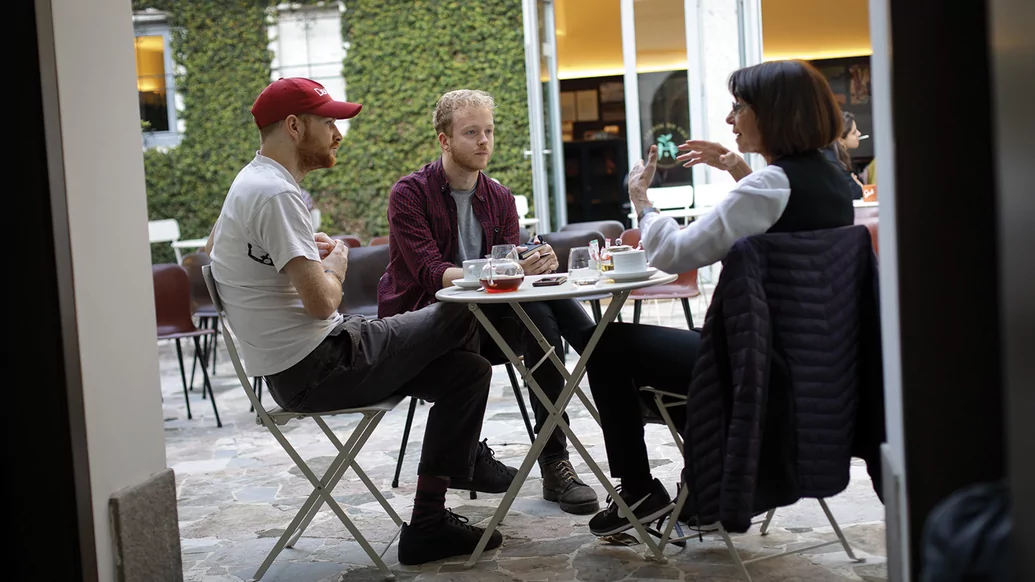

“Because I’m quadraphonic, it’s all about the space,” Ciani says. “You know, my favourite place to play was Royal Albert Hall because it’s made for that. You get in the middle and it’s like being in the driver’s seat of this huge spaceship, and it’s wonderful.
“[In other venues] a lot of people still don’t quite understand that, in quad, it’s four equal speakers,” she adds. “Everybody has these big stacks in the front, and to get them to replicate those in the back is something they don’t get right away because they don’t know what it is.”
“The speaker should be facing you,” Treanor agrees. “It never makes sense to me, when performing music, you shouldn’t really be behind the speakers. The person performing should be at the back of the room! It's just all old baggage from rock & roll.”
“Exactly,” says Ciani. “But even the rock & rollers, you know, they never had [their own] theatres. They would take these truckloads of gear and put it into a gymnasium or whatever. We haven’t had proper theatres for this type of music. How do you build an architectural structure that’s going to be good for all this? And that’s the next step. I've worked with a group in Germany called ISM — Institute for Sound & Music. They have kind of a clever solution: they made a scaffolding. So it’s an internal infrastructure that they can move into spaces. And they hang the speakers so it’s a surround system that is hexagonal, and it’s brilliant. It is 44 speakers! But, for me, quad is enough. You can do it all in quad if you have the right controller.”
“I would say [space amounts to] over 50% [of a performance],” says Treanor. “It’s like in any context isn’t it? If you play a certain piece of music in the wrong context, whether it’s playing dance music in a seated theatre or like playing something really delicate in a dance context, that’s more of an environmental thing. It’s about how it responds to the room itself and the PAs. The music is, in a way, kind of secondary to that. It’d be good to make something that just fits in any context, but I’m yet to find that.”
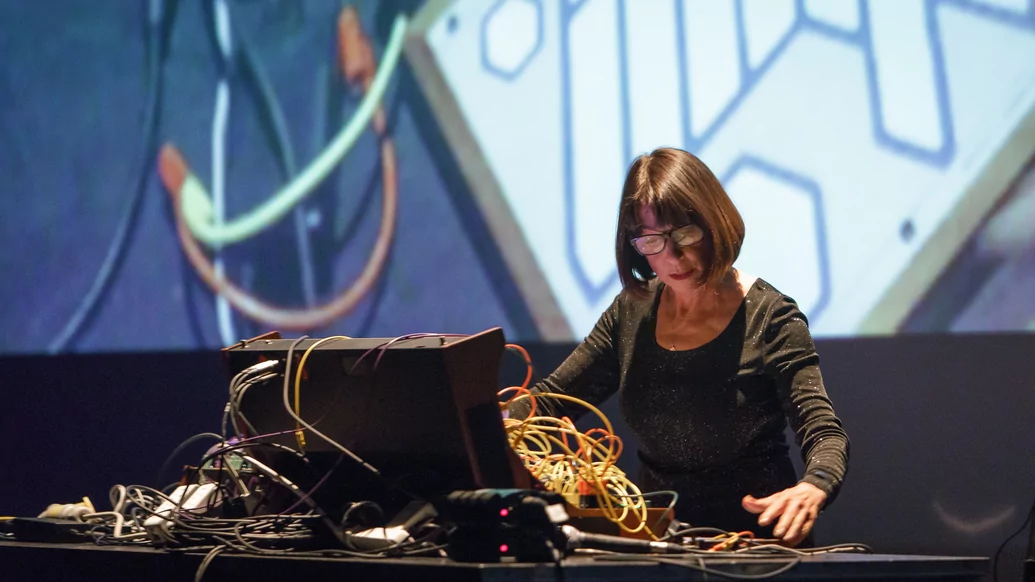

RISK FACTOR
Both Ciani and Treanor relish in the unpredictability of electronic music, and strive to achieve the most open-ended way of performing and composing as possible, even if that allows for an increased risk factor and mistakes. And while that is easier for Ciani than Treanor, due to the nature of their live set-ups, he is determined to explore new ways of making the sounds he wants us to hear.
“It’s about being in the moment,” Ciani says. “Which is, spiritually, something that we all try to achieve — being in the now, because that’s a special space. And I think it’s a tool, you know, that process of interacting and thinking on your feet. It’s also just the joy of getting that feedback from the machine. It’s a dance: you have a partner, and you’re doing this interaction. It’s fun, right?
“It keeps you happy, because you don’t have time to think,” she continues. “It’s a tightrope walk. I welcome mistakes! We call them mistakes, but they’re not mistakes. They’re like surprises. Maybe a signal went out, maybe a wire went bad, maybe something disconnected. And what do you do in the moment? It’s a gift because it makes you go, ‘Oh boy, now I have to find out a new way to do this’, and keep it going. Because you can’t stop and say, ‘Hey, guys, I’m sorry, this isn’t going according to plan’. There is no plan. You know, the plan is to be responsive.”
“[I come] from more of a club tradition,” Treanor says. “But I’ve started to use more processors like Max MSP and things like that, so it’s not so much a composition. It has generative elements to it. There’s some level of improvisational instability within it. Smaller components of it might be like a rhythm generator. You can change what events are happening and when. Like, how you sub-divide certain elements of that rhythmic cycle, or the choices that you have between what it could do on the next step or something.
“When I grew up making music it was more like techno,” he adds. “So it was predetermined, a sequence of information along the composition. When I started collaborating with people, I needed something that was more interactive, that you could change more impulsively or that you could improvise with. That’s what drew me to Max MSP.”
“I know there’s a lot of computer usage out there and a lot of it is pre-recorded stuff,” Ciani responds. “So I like that what you’re doing is using it as a live interface and interacting with it. And that’s what it’s all about, right? It keeps you interested. Keeps you alive.”
“I guess the thing that’s difficult with a computer is that it has to have some level of predetermination to it,” Treanor admits. “If I just started with a blank canvas or like, if it were fully improvised from that level, it’d take me about four days to get to a point where it actually even generated sound. So the difficult thing with computer stuff is how much to leave programmed and structured, and what elements can be manipulated or decided on in that moment. But yeah, I think there are a lot of things to do with being in the moment and actually composing a thing as it’s happening. [I’m] working on a computer program on my own, with a beginning, middle and end. From my experiences, where I’ve come from and how I’ve got into music, it’s always been really missing that element of visceral connection in the moment. I’m really interested in finding out ways to do that, to be able to play that stuff as an instrument. To use a sequencer as a live device.”
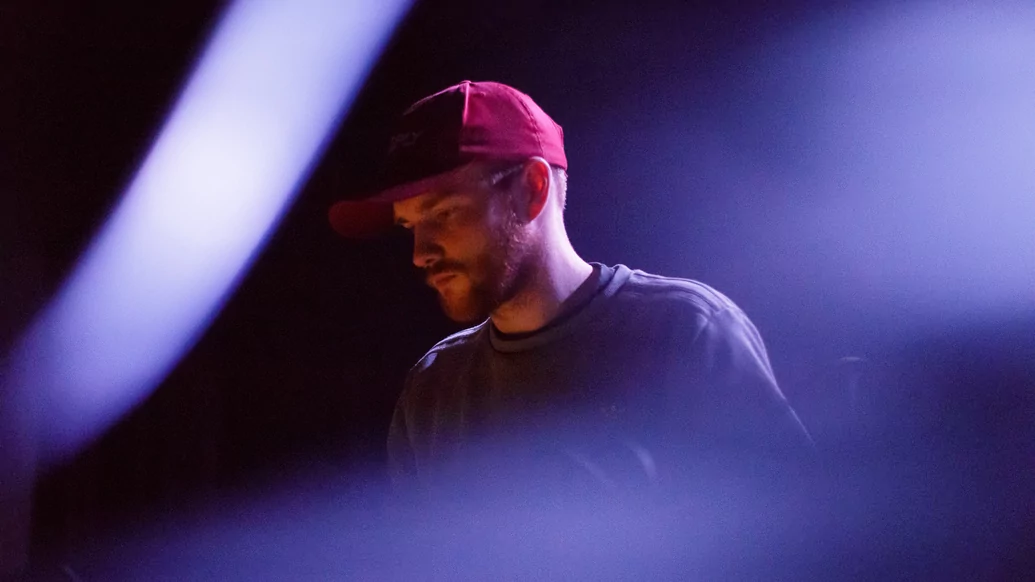

“I think in a way we’re doing the same thing, but we are using different tools,” Ciani says. “Because I also believe in having this starting point. And for me, it’s the sequences and the patch, right? I mean, the patch is not totally defined. But it’s a good place to start. I know where things are. I know what to reach for. I know what’s going to happen. I do that, then I have to decide what I want to do. You need to be alive. You need to be engaged, or you get bored. And if you’re bored, the life goes out of everything. Yeah, so we’re in the same boat, but then we’re in different boats, you know?”
“But I guess from your perspective, when those sounds had never been heard before, I bet that really blew people’s minds,” Treanor quizzes. “What was it like at that time?”
“Back then nobody understood it at all,” Ciani says. “So they didn’t know where the sound was coming from. They didn’t have a clue what was going on in the machine, even if they could see it, they wouldn’t know. For me, it’s personal. You know, I care about my audience but I always have that feeling that if it works for me, there’s a good chance that can translate.”
“That’s the only thing you can go on isn’t it?” Treanor concludes. “If you think it’s bad, then what else are you going to do with it? You’ve got to get to a point where you’re like, ‘this really excited me!’ Then hopefully that will transfer.”
“And amazingly it does transfer!” beams Ciani. “I’m in shock actually, that people get it.”
